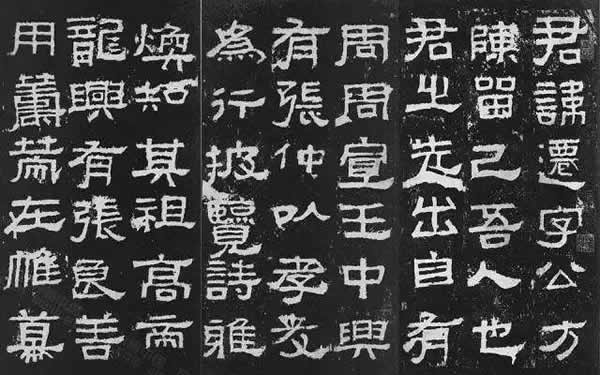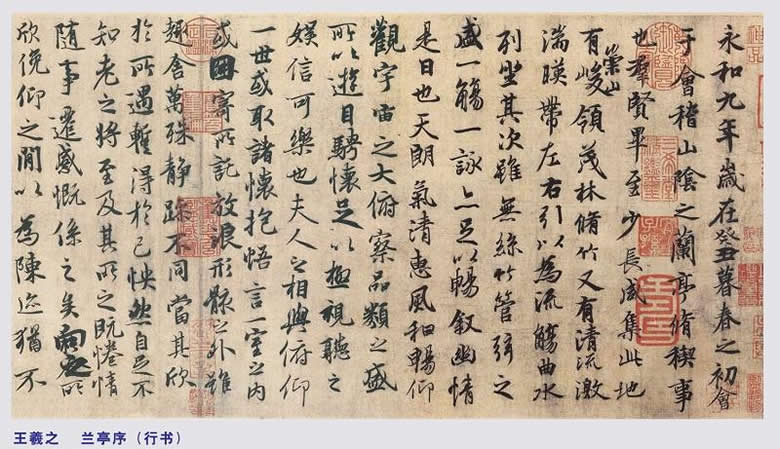Chinese calligraphy has a very long history, and it is also a unique form of artistic expression in our country. Through simple lines, the art world is vividly presented. The types of calligraphy specifically refer to the types of calligraphy fonts, or the styles of different fonts. The types of Chinese calligraphy can be roughly divided into five forms, namely cursive script, official script, seal script, regular script and running script. However, these major categories also include some small categories, such as seal script includes small seal script and large seal script, and regular script is also divided into many small categories, such as Weibei Tang Kai, Slender Gold, Er Wang style, etc. So calligraphy is a relatively complex art form, so what are the characteristics of these types?

Seal script, this kind of font can be divided into small seal script, large seal script and oracle bone script. The history of oracle bone script is quite long, dating back 3,000 years. It is a relatively early type of writing, and it is mainly used for divination. In the writing style of oracle bone script, there are more straight lines, the font is very thin and straight, and there are sharp pens, round pens, and square pens when starting to write. Large seal script mainly refers to Zhuanwen, Jinwen, and the characters of the Six Kingdoms. They have the characteristics of ancient pictographic characters. Small seal script is also called Qin seal script, because it is a unique text in the Qin Dynasty. It is also a simplified form of large seal script. Its characteristics are that the overall shape is relatively uniform and very neat, and the font is easier to write than Zhuanwen.

Official script, also known as Han Li, is a common and solemn type of Chinese character. When writing, it is slightly wide and flat. The horizontal strokes are longer and the vertical strokes are shorter, which makes it look like a rectangle. Official script emerged in the Qin Dynasty. It was compiled by Cheng Miao at that time. In the Eastern Han Dynasty, this type of script was widely used. It is also known as Han Li Tang Kai in the field of calligraphy.

Cursive script, this font appeared mainly for the convenience of writing. Cursive script began in the early Han Dynasty. The characteristic of this font is that it is written according to one’s own ideas, without considering the writing rules of official script, and only needs to be expressed freely. This font is called cursive script.

Xingshu, which originated from regular script, can be said to be an innovation of regular script. It is mainly a font between regular script and cursive script. This font appeared to solve the problem that regular script is slow to write and cursive script is not easy to recognize, so this font appeared. Xing here means walking, so the overall visual effect of Xingshu is not as sloppy as cursive script, nor as upright as regular script. Its essence is to make regular script cursive and cursive script regular. If the regular form is more than the cursive method when writing, it is called Xingkai, but if the cursive method is more than the regular form, it is called Xingcao.

Kaishu, this kind of calligraphy is also called regular script, true script, and regular script. This form of calligraphy was formed through the gradual changes after Cheng Miao created the official script. It tends to be simpler than any previous font, with relatively flat horizontal and vertical lines. This calligraphy began in the late Han Dynasty and is still in use today. It can be said to be enduring. The writing of Kaishu follows the rules of Han Li, but it pursues the overall beauty of the font. In the late Han Dynasty and the Three Kingdoms era, this font gradually developed in a strict direction. The main feature of Kaishu is that it is written in a relatively regular manner. It is a more formal font among all fonts, so this font is still in use today.

Chinese calligraphy embodies Chinese culture and is a form of our language expression. Practicing calligraphy more can help you feel the breadth and depth of the culture.
